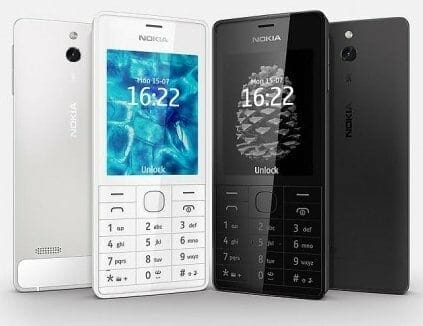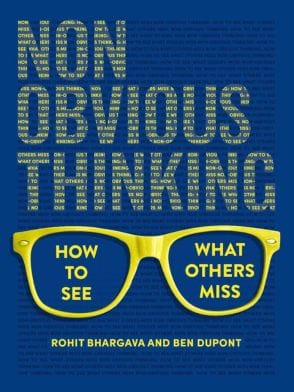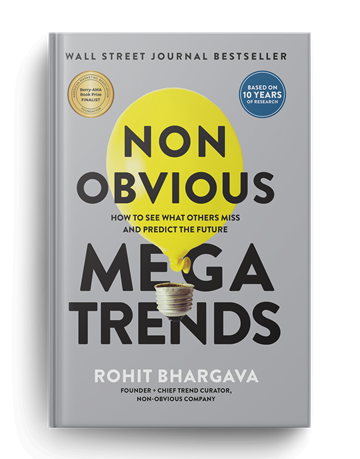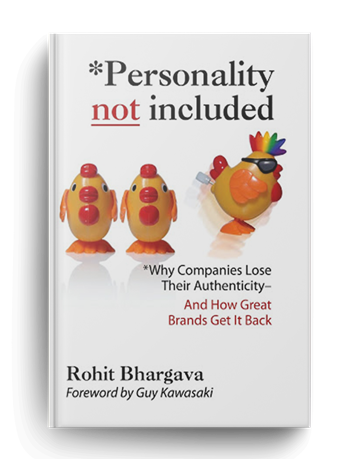 Last month Nokia quietly missed the opportunity of the decade.
Last month Nokia quietly missed the opportunity of the decade.
It wasn’t easy to spot. Amidst all the news about the mega-implications of the Microsoft-Nokia merger this week, some critics are adding up the failures of two doomed brands while others see it as proof of Android’s projected growth. Just about every article looks at the deal through the lens of smartphone market share. There is only one financial question everyone is asking: who will dominate the smartphone market?
That might be the wrong question.
The Nokia Phone You Haven’t Heard About …
Nokia has been receiving great reviews for one of its most ambitious phones yet – the Nokia Lumia 1020. Featuring the killer feature of a 41 megapixel camera sensor, the highly entertaining TV spots promoting the new phone use familiar situations like attending a kid’s theater performance to demonstrate just how good life would be if you could zoom in without having to be part of the action:
What most of us missed was another Nokia phone that quietly launched at almost the same time. It had a much different promotional plan with a single ordinary product video [below] posted onto YouTube and a lonely product page on the Nokia website. This phone (unimaginatively dubbed the Nokia 515) was the opposite of a smartphone – fitting in a category that gadget blogs have termed “dumbphones.”
It’s not easy to understand why Nokia didn’t focus on promoting the 515. Of course the Lumia 1020 is a far sexier place to put marketing dollars. Yet this one missed opportunity points to a greater truth about the new Nokia-Microsoft alliance which may indeed serve to doom both to remaining a distant third place behind iPhones and Android Phones.
Why? Because there one thing that tech enthusiasts love to forget when it comes to these so called dumbphones … there’s actually a surprising number of people who want them.
Who Wants A Dumb Phone?
 Of course no one goes into a phone purchase looking to buy a phone that is low on intelligence. But the “dumbphone” category basically includes any phone that doesn’t feature wireless internet and surfing capability. Here’s the thing about all of that access that tech snobs sometimes forget … not everyone wants or has the ability to pay for it.
Of course no one goes into a phone purchase looking to buy a phone that is low on intelligence. But the “dumbphone” category basically includes any phone that doesn’t feature wireless internet and surfing capability. Here’s the thing about all of that access that tech snobs sometimes forget … not everyone wants or has the ability to pay for it.
There are at least five key target audiences that would LOVE a dumbphone like the Nokia 515:
- The “Conscientious Smartphone Objector“ who wants to avoid living life tethered to a device.
- The Technology Avoider who want the simplest possible phone with less features.
- The Data Plan Hater who don’t want to pay extra per month for data access.
- The Outdoor Explorer who is in areas with low coverage often or needs the best battery life.
- The Phone Seeker who prefers a phone to use for talking above anything else.
And these are just the categories of potential users that came to mind with a little bit of thought. The true audience includes perhaps many more categories of users. And there are billions of “dumbphones” currently in use throughout the world. The market for these phones may be shrinking worldwide, but it is more sizeable today than most media would have you believe.
Aside from the myth that no one wants these dumb phones, even the gadget blogs raved about the design and features of the Nokia 515. PhoneDog noted that the Nokia 515 was “the first feature phone that has interested me in years.” And Wired magazine called the phone “the nicest dumbphone you can buy.”
3 Ways a Dumb Phone Might Have Changed Nokia’s Future
So despite the fact that there is a market for dumb phones that numbers in the billions (today), and Nokia has the ability to put out a dumb phone that even skeptical critics give winning reviews to … they chose to follow Microsoft’s also-ran “Don’t Fight, Switch” positioning and focus on their own top of the line smartphone in the Lumia 1020. As we now know, this strategy ended in the recent merger with Microsoft.
While the merger may yet pay off for both partners, there are three ways that making a different choice might have changed Nokia’s fortunes – and carved out a sizable alternative market without taking on Microsoft as a partner:
- Focus on battery life. According to the reviews, the Nokia 515 has a standby battery life of 33 hours. If you can reduce the processing speed needed for smartphone features, you can dramatically improve battery life as well. Most smartphones still offer a pitiful battery life, and with no real solution in sight this is a huge opportunity for a mobile phone maker to own the “best battery life” reputation by trading off less important features for their target audience.
- Target tech laggards. There are still a large number of people who want a great phone to actually talk and text, but don’t care about the “smarter” features. Just about everyone in the mobile phone industry believes that these users will be gone in a year, but the facts don’t support that assumption. The more likely near term future for the next several years will likely see costs decrease to allow some price sensitive users to get smartphones, but also lead to growth in the “smartphone objectors” who see choosing a less feature rich phone as a lifestyle choice.
- Leapfrog technology. One of the best potential benefits of not focusing on trying to capture part of the smartphone race is that it also could have freed Nokia’s best and brightest engineers to push forward promising research such as the Morph Device Concept that received lots of attention a few years ago – but seemed to stall to a halt after that initial buzz.
Conclusion
Every analyst watching the mobile industry is predicting a future heading towards smartphones. Connectivity will get cheaper, technology will get better and devices will become more ubiquitous. None of that is likely to change. In the quest to dominate smartphones, though, there was a golden opportunity for one player to position themselves outside of the race.
What the industry calls “dumbphones” may be just the kind of focused and functional product today’s market is longing for. And in a market like that, ignoring what customers want isn’t just a bad strategic choice. It’s also pretty dumb.
























Well hello Rohit, I had never heard of the 515 until now but like you I am surprised that they did not promote this more heavily.
By branding everyone without a smartphone as a tech laggard they forget the very fact the world is in a recession and the primary reason for that was the ‘want more’ culture which the 515 is a great cure for.
A minimalist lifestyle with its focus on freedom from excess junk in our lives is a growing trend amongst people who have rode the commercial conveyor belt and now desire a return to a simpler, calmer and more sociable lifestyle.
Everyone is bragging about 4G and beyond but realistically smartphone data plans will have to abandon the cell network and rely upon WiFi due to the extortionate data plan costs and as you point out the fact that you will only be able to watch the first 30 minutes of a film before you kill your battery, unless you are plugged in and then you may as well use WiFi.
I have an SII and am fully aware that with all the bells and whistles turned on, if I do breakdown in the middle of nowhere then the most likely scenario will be a trek to the local farm to use their phone as mine is dead of dying.
igor
Igor – great points, and yet another argument that may be a viable category here that many manufacturers are completely ignoring.
You’ve missed a key marketing tenet here.
Dumbphones had become commodities. There was no money in it any more. No innovations to justify higher prices – or even the airtime costs.
Everyone was going out of business – until Apple came along.
That’s why Smartphones are important. Microsoft revealed that they will make >$40 per phone on Smartphones post-merger. Dumbphones sell for that amount. Last, but not least this is the market where the Chinese excel. Brands we don’t even see like ZTE and Huawei can sell these things for less than the Finns can make them for.
Peter – excellent comment, thanks. I agree that dumbphones have become commodities, but that is also the reason why this particular dumbphone received such great reviews. It’s a $150 dumb phone that offers plenty of features outside of internet connectivity. There are only two ways to succeed in a commodity market – offer better value, or innovate yourself out of it. I’d argue that the Nokia 515 represents the latter (with it’s high quality camera, form factor AND insanely long batter life) … and this offers an alternative future for dumbphones in the process. Plus, at that price point, I imagine the margins for Nokia would be fairly healthy.
smartphone in the US/Western marketing are sexy. But making pennies per phone for the billions of people who can’t buy a phone is huge.
Plus, there’s the bit about saving the world.. billions have a phone like this as their only connection.. literally saving lives with little things we take for granted
The standby battery life is 33 DAYS, not hours.
Dumbphones may have a market but is that market large enough to justify Nokia pouring in large amounts of money into tv ads.
For example, if you saw ads for Apple iphones, Samsung galaxy phones and then saw an ad for a Nokia dumbphone. What do you think would happen?
The consumer would think that Apple and Samsung are really doing great and here comes Nokia out of the 1990’s with their phone that doesnt have any cool features.
I dont think Nokia would want to position itself as a dumbphone leader. There may be an opportunity but it may not as profitable as the smart phone market.
You can go to pretty much any mobile store these days in North America and get $0 phones that may not be as flashy as the larger smart phones but can satisfy the needs of people desiring dumb phones.
And yet, strangely the top 2 things average mobile phones users do:
Messaging related activities: 23 times per day
Voice call related activities: 22 times per day
Compared to:
Using music player: 13 times per day
Gaming: 12 times per day
Social Media: 9 times per day
Camera: 8 times per day
Search and Web browsing: 3 times per day
Source: TomiAhonen Almanac 2013
https://communities-dominate.blogs.com/brands/2013/03/the-annual-mobile-industry-numbers-and-stats-blog-yep-this-year-we-will-hit-the-mobile-moment.html